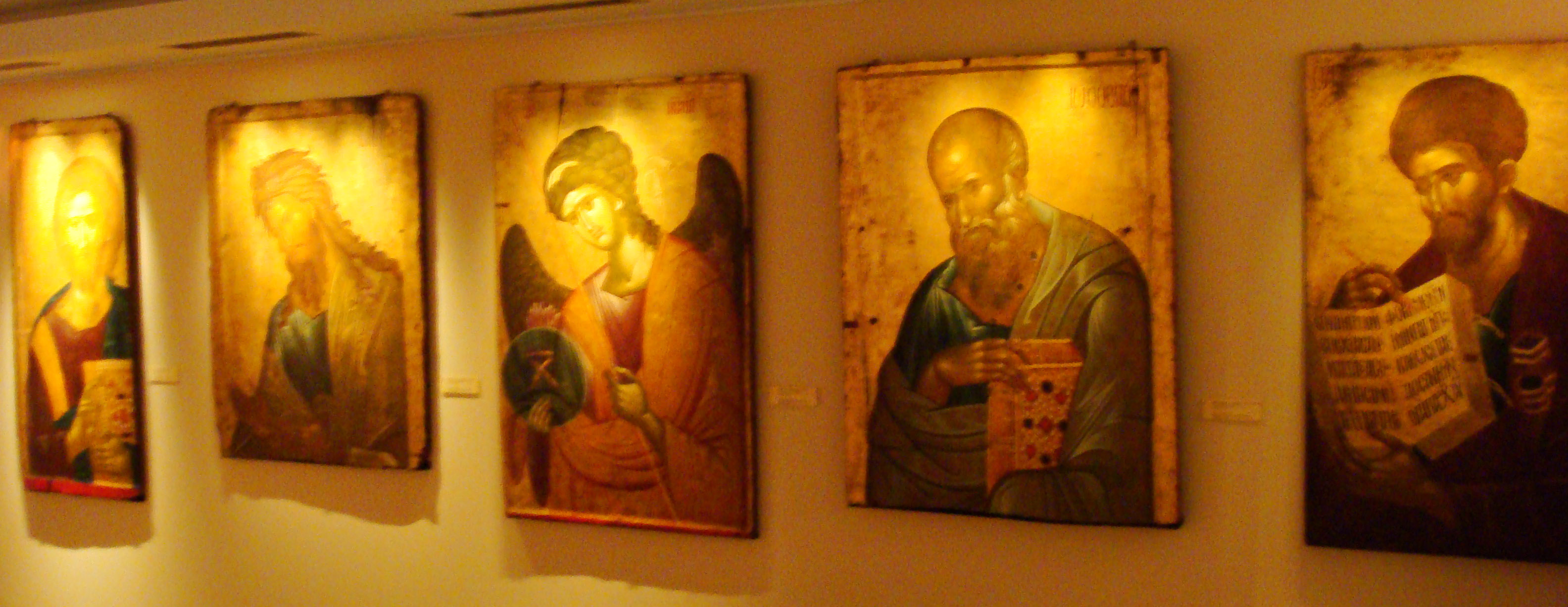The perception of beauty
28 Απριλίου 2010
The recent questions about knowing God – which I have described as something that often comes to me in the “peripheral vision” of my life – seems somehow related to the perception of beauty as well. Beauty often seems to be “greater than the sum of its parts.” We see beauty not simply by looking at a thing – but by seeing it. Many people look at icons – a rightly prepared heart is required in order to see an icon. Beauty is not an object to be manipulated – but always a gift and a wonder to be venerated. So, too, our knowledge of God. Thus the knowledge of God seems radically different than the knowledge we gain by the exercise of our rational faculty. God cannot be mastered or measured. Even though He has given us words to express Him – He cannot be contained in the words. As the Fathers of the 7th Council said, “Icons do with color what Scripture does with words.” I would suggest that it is also true that Scripture does with words what icons do with color. With that – some brief thoughts on beauty.
We can say without hesitation that God is the ultimate author of Beauty, and what we know and love of beauty is an echo or stronger of our desire for the Beautiful God. It becomes a major problem of sin, largely unrecognized, when beauty begins to recede from the consciousness of people, or something tawdry or ersatz becomes substituted for that which is beautiful.
We live, of course, in a culture which is predicated on mass production. Thus even within Orthodoxy we are driven towards mass production in an effort to economize and to satisfy ourselves with the same level of aesthetic that marks our culture (this is frequently true of icons in mission churches, including my own). I have had opportunity to see and worship in an environment marked by quality iconography and in a few cases, truly great icons.
I can recall being in a parish that has a particularly well-rendered “Rublev” Trinity (the three angels in the visit with Abraham) in the parish altar. I was officiating Vespers. As the sun began to set, the dying rays of the evening sun caught the icon and it began to “luminesce” in a manner I had only read about. The icon shone brightly with a light that appeared to come from within. This is not easily accomplished in the painting of an icon, but is certainly a proper goal of its execution. It is a revelation of the heavenly light (iconographically).
Both the orientation of the Church and the quality of its iconography became one with the service that was being offered and a beauty that is all too rare was revealed. There was nothing to be said, but as the choir sang, “O Gladsome Light,” the icon wordlessly proclaimed the same.
There is much in our life and culture that pushes us away from beauty. Mass production and the nature of our economy (marked by a level of productivity unknown in human history), are driven by questions other than beauty. Beauty has value as it can be marketed, but too often is absent in any depth from much of our experience.
Deeply distressing is the drive to “utility” in our lives. Value is given to that which is “useful.” Beauty thus becomes an avocation, a luxury not seen as useful or necessary to our existence. Of course, this is a deep miscalculation of the nature of human existence. Human beings do not exist well without beauty – and in most of human culture throughout most of human history, beauty has been valued beyond many of the things which we think of as “useful.”
The recent questions about knowing God – which I have described as something that often comes to me in the “peripheral vision” of my life – seems somehow related to the perception of beauty as well. Beauty often seems to be “greater than the sum of its parts.” We see beauty not simply by looking at a thing – but by seeing it. Many people look at icons – a rightly prepared heart is required in order to see an icon. Beauty is not an object to be manipulated – but always a gift and a wonder to be venerated. So, too, our knowledge of God. Thus the knowledge of God seems radically different than the knowledge we gain by the exercise of our rational faculty. God cannot be mastered or measured. Even though He has given us words to express Him – He cannot be contained in the words. As the Fathers of the 7th Council said, “Icons do with color what Scripture does with words.” I would suggest that it is also true that Scripture does with words what icons do with color. A very sad existence indeed is a human life that has been reduced to utility and emptied of beauty.
The very presence of God brings beauty into the world, for God Himself is beautiful. As human art has revealed, even in the suffering of the Cross, God is beautiful.
fr. stephen




